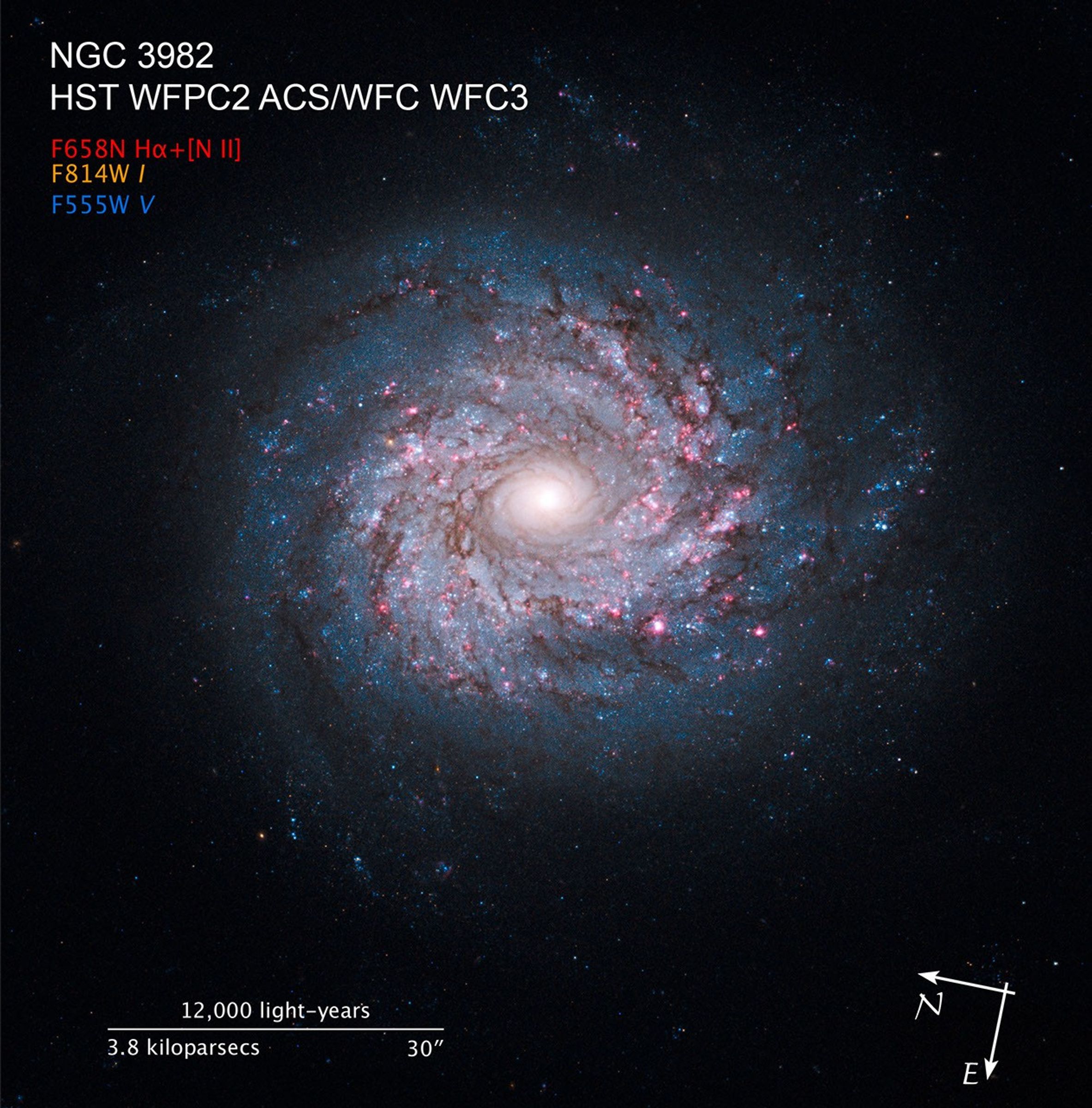1 min read
Face-on Spiral Galaxy NGC 3982

Though the universe is chock full of spiral-shaped galaxies, no two look exactly the same. This face-on spiral galaxy, called NGC 3982, is striking for its rich tapestry of star birth, along with its winding arms. The arms are lined with pink star-forming regions of glowing hydrogen, newborn blue star clusters, and obscuring dust lanes that provide the raw material for future generations of stars. The bright nucleus is home to an older population of stars, which grow ever more densely packed toward the center.
NGC 3982 is located about 68 million light-years away in the constellation Ursa Major. The galaxy spans about 30,000 light-years, one-third of the size of our Milky Way galaxy. This color image is composed of exposures taken by the Hubble Space Telescope's Wide Field Planetary Camera 2 (WFPC2), the Advanced Camera for Surveys (ACS), and the Wide Field Camera 3 (WFC3). The observations were taken between March 2000 and August 2009. The rich color range comes from the fact that the galaxy was photographed invisible and near-infrared light. Also used was a filter that isolates hydrogen emission that emanates from bright star-forming regions dotting the spiral arms.
About the Object
- R.A. PositionR.A. PositionRight ascension – analogous to longitude – is one component of an object's position.11h 56m 28.13s
- Dec. PositionDec. PositionDeclination – analogous to latitude – is one component of an object's position.55° 7' 30.86"
- ConstellationConstellationOne of 88 recognized regions of the celestial sphere in which the object appears.Ursa Major
- DistanceDistanceThe physical distance from Earth to the astronomical object. Distances within our solar system are usually measured in Astronomical Units (AU). Distances between stars are usually measured in light-years. Interstellar distances can also be measured in parsecs.68 million light-years (26 million parsecs)
About the Data
- Data DescriptionData DescriptionProposal: A description of the observations, their scientific justification, and the links to the data available in the science archive.
Science Team: The astronomers who planned the observations and analyzed the data. "PI" refers to the Principal Investigator. - InstrumentInstrumentThe science instrument used to produce the data.HST>WFPC2, HST>ACS/WFC, and HST>WFC3
- Exposure DatesExposure DatesThe date(s) that the telescope made its observations and the total exposure time.March 2000 - August 2009, Exposure Time: 25.5 hours
- FiltersFiltersThe camera filters that were used in the science observations.F555W (V), F658N (H-alpha+[N II]), and F814W (I)
- Object NameObject NameA name or catalog number that astronomers use to identify an astronomical object.NGC 3982
- Object DescriptionObject DescriptionThe type of astronomical object.Face-on Spiral Galaxy
- Release DateOctober 19, 2010
- Science ReleasePinwheel of Star Birth
- Credit

The image is a composite of separate exposures made by the WFPC2, ACS, and WFC3 instruments on the Hubble Space Telescope. Three filters were used to sample broad and narrow wavelength ranges. The color results from assigning different hues (colors) to each monochromatic image. In this case, the assigned colors are: Blue/cyan: F555W (V) Red: F658N (H-alpha+[N II]) Red/yellow: F814W (I)

Share
Details
Claire Andreoli
NASA’s Goddard Space Flight Center
Greenbelt, Maryland
claire.andreoli@nasa.gov





























